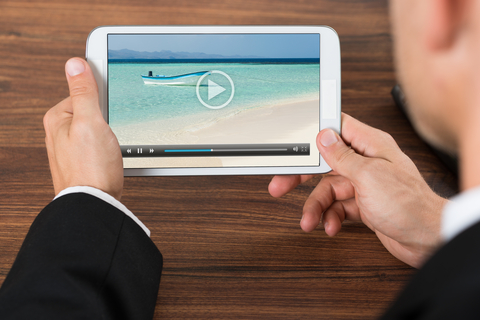When we suggest video ads to clients, many are taken aback.
“Video ads?” they say. “Can we do that?”
Well, if you have video assets and a relatively healthy PPC budget, then yes, you can. And probably should.
Why aren’t video ads on everyone’s radar? Many think video ads are out of their budget. Others think they’d have to engage a specialized agency to manage them. But, in fact, video ads are within reach of many businesses, especially if targeted appropriately.

And video ads are managed through AdWords—just like display and text ads—so there’s no new marketing system to master.
That’s not to say that video ad campaigns are easy or simple (few things are in AdWords), but if you work with a PPC agency experienced in video ads, they’re totally doable.
So if you’re interested in integrating video ads into your PPC campaigns, here are few reasons why should:
- Assets. Make the most of your video content. If you already have videos and/or a YouTube channel, you’re most of the way there. Video ads are a great way to get more value from these assets and make them more visible to potential clients.
- Targeting. Just as with text and display ads, you can control whom to target with video ads. You can parse a larger number of parameters covering demographics, topics and interests. You can also get specific on ad placements, remarketing lists and keywords. Even if your budget isn’t hugely robust, you can still conduct narrowly targeted campaigns in your local market.
- Exclusions. On the flip side, you can also control what to exclude. If you don’t want your videos to run on certain sites or to certain audiences, you can specify this through negative targets. It’s a great way to omit irrelevant traffic.
-
Engagement. With video ads, you only pay for engaged viewers. Google determines engagement by how much viewers watch. If a viewer watches less than 30 seconds, your campaign isn’t charged.
The same “no engagement, no pay” rule also applies to in-stream ads. (In-stream ads are video ads that automatically play before the selected video.) With in-stream ads, you pay only when people watch 30 seconds or more (or to the end of the video if the ad is under 30 seconds).
- Remarketing. As with text and display ads, you can create a remarketing list for people who’ve watched your videos. You can then advertise to this list via the Google Display Network. (For a refresher on remarketing, see our post AdWords Remarketing: Know Your Options.)
- Audience. The audience for YouTube is massive! It has over 1 billion users and is ranked the second largest search engine after Google. It’s simply too big to ignore!
- Product showcasing. When it comes to products, a video is worth a thousand words (and a hundred pictures). There’s no question that showcasing a product via a video ad is more effective than describing it or showing a few photos.
-
Potential ROI. We’ve run video ad campaigns for many clients who’d experienced success with Google Search Network and Google Display Network and were looking for something more. We found these campaigns worked especially well when target audiences have a natural affinity for video. (Every audience is different. Some respond more to text; others to video.)
And when thinking about ROI, don’t make any assumptions about cost. You might think video clicks cost more than search network clicks—but that’s not always the case. For example, one of our clients pays $1.80 for each search network click but only $0.15 for video clicks!
While the idea of adding video ads to PPC campaigns still takes some companies by surprise, we expect this to change soon. We predict it’s only a matter of time before video ads are an accepted (and expected!) component of many PPC campaigns.
Why not add them to yours?






